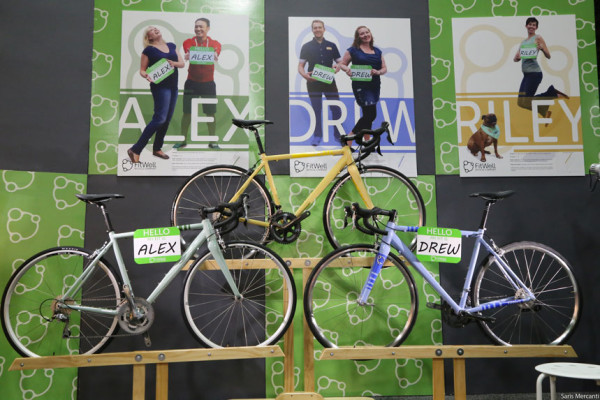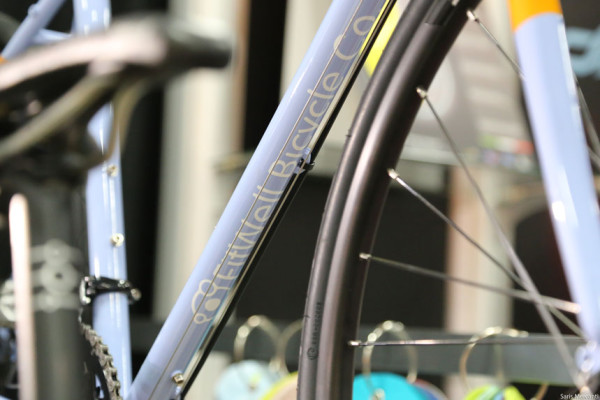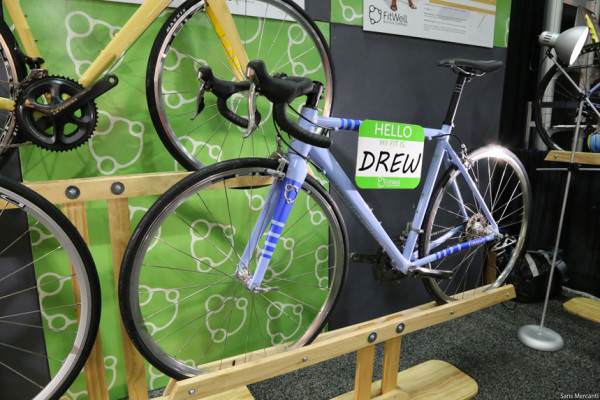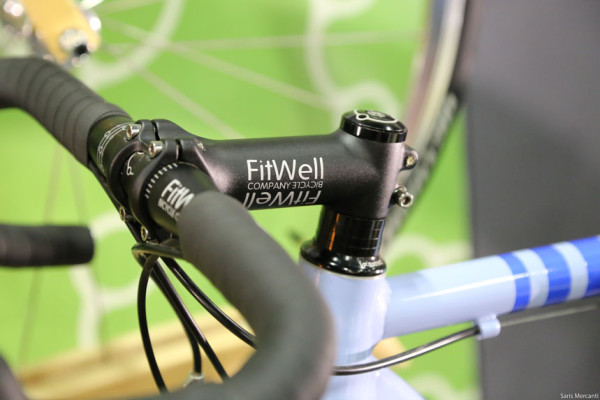Fitwell Bicycle Company is hoping to change the way we buy bikes. They see a future where there is more than just a handful of sizes to pick from based on your height, where we can truly fit a person to the bike by their unique body type. $500 fitting sessions and $5,000 custom frames are the norm in this area, but Fitwell plans to bring this level of body fit to normally-priced bikes.
Vice President Ryan Cate is responsible for all product, sales and marketing of this small start-up, and his ideas on fitting a person to a bike are a ways ahead of the standard industry. He was approached by a friend in the industry to create a brand that was more fit and sizing specific than gender specific, because gender is not an accurate method of sizing. There are a lot of men that may have proportions more like a standard women, and vice versa. Ryan noticed that there were a lot of bikes being ridden with large spacer stacks on forks to fit the rider, or other strange modifications in the attempt to make a poor fitting bike work. So they set out to make a change.
Fitwell designed all the geometry by taking the adult height range, taking 6 different leg length ratios and developed the sizing from that. They also developed plots of other standard brands geometry, and finding out how they were missing or poorly fitting large swaths of the population by typically only targeting the median population with a 47% leg length ratio. Fitwell then spent a good amount of time plotting out the center of mass for each rider type, and keeping that properly placed between the wheels of the bike, and letting all other dimensions drive off of that.
Cate says “We want to offer bikes in the price point of a first good bike, offering the fit of a much more expensive custom bike, to insure the rider is happy and comfortable.”
Full geometry changes throughout the range in the sizing approach, including rear center to keep the center of mass of the rider properly balanced between the wheels. Opposite of other companies, the wheelbase does not remain fixed, instead they concentrate on the handling geometry of each persona first, and the rest follows, this is what allows the rear centers (chain stay length) to change throughout the size and type range, keeping that rider balance between the wheels. This is extremely different than most stock geometry bikes, that typically all keep the same rear center for a model, and only adjust front center, stack and angles per size, which changes the mass placement over the wheels between sizes.
Fitwell’s intent is to shoot for gender neutrality in sizing, looking at proper fit for the body type over calling something gender specific.

Starting out with a series of personalities to fit the rider, Fitwell will direct you to a calculator on their website that uses a series of measurements, that drive a ratio between your height and leg length. This ratio will help determine whether you are Alex, Drew or Riley.
Alex is a racing fit, with a larger drop from the saddle to the bars, and is for a person who is flexible enough to reach below their ankles, and/or has a large torso length. Drew is a similar fit to Alex, in that its more for racing, and for a flexible person, but for a shorter torso length. Riley is relaxed and for someone who can only reach to their shin when bending over, and/or has a short torso length. There are several variables that work together, since the ability to touch your toes can be from flexibility, torso length, previous injury or other factors.
Fitwell is starting out with two models. The deGroot is a butted alloy frame, full carbon fork, and available in Drew and Alex fits to start. The deGroot 1 comes with a Shimano Tiagra drivetrain for $1,265, deGroot 2 with Shimano 105 for $1,470 and deGroot 3 with Shimano Ultegra 11 speed for $2,195
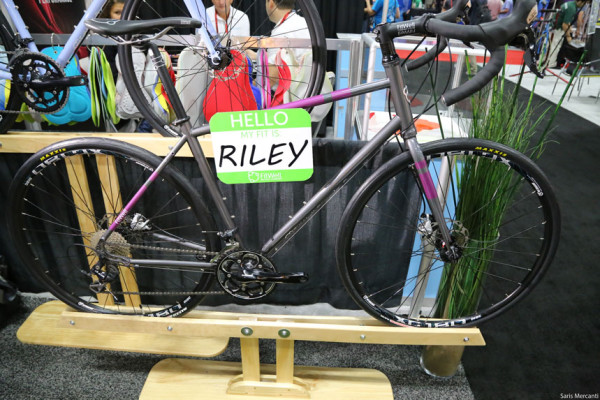 Fahrlander is butted chromoly frame and fork available in a Riley fit to start. The Fahrlander 1 is $975 with Shimano Sora and Fahrlander 2 is $1,310 with Shimano 105. The Fahrlander also has disc brakes, which at this price point is not typically seen.
Fahrlander is butted chromoly frame and fork available in a Riley fit to start. The Fahrlander 1 is $975 with Shimano Sora and Fahrlander 2 is $1,310 with Shimano 105. The Fahrlander also has disc brakes, which at this price point is not typically seen.
